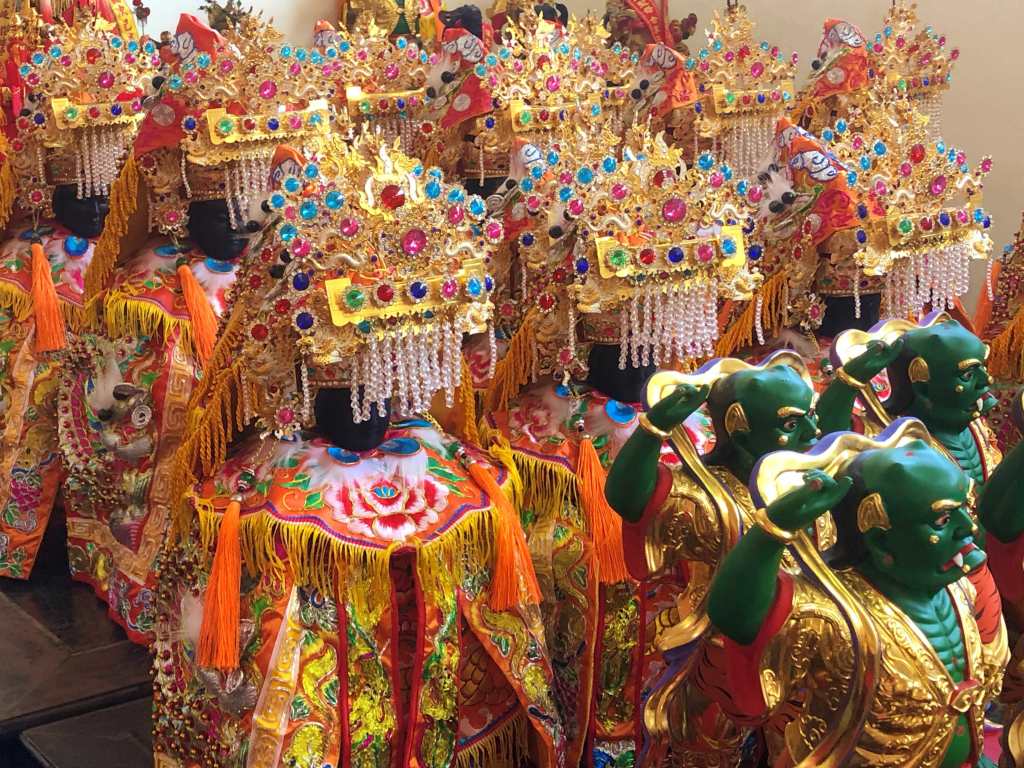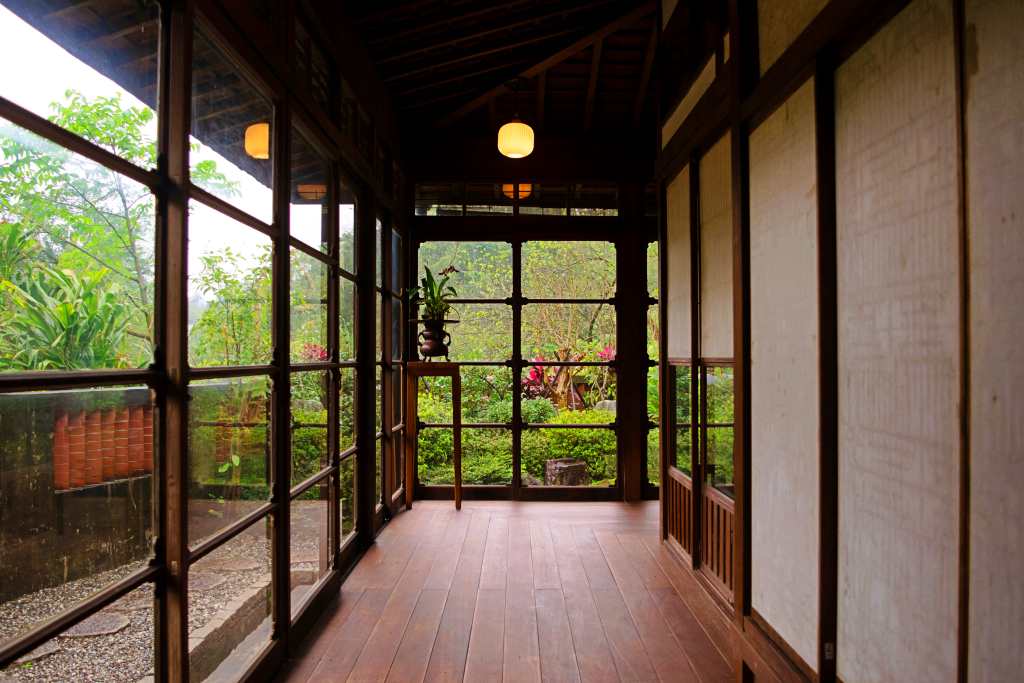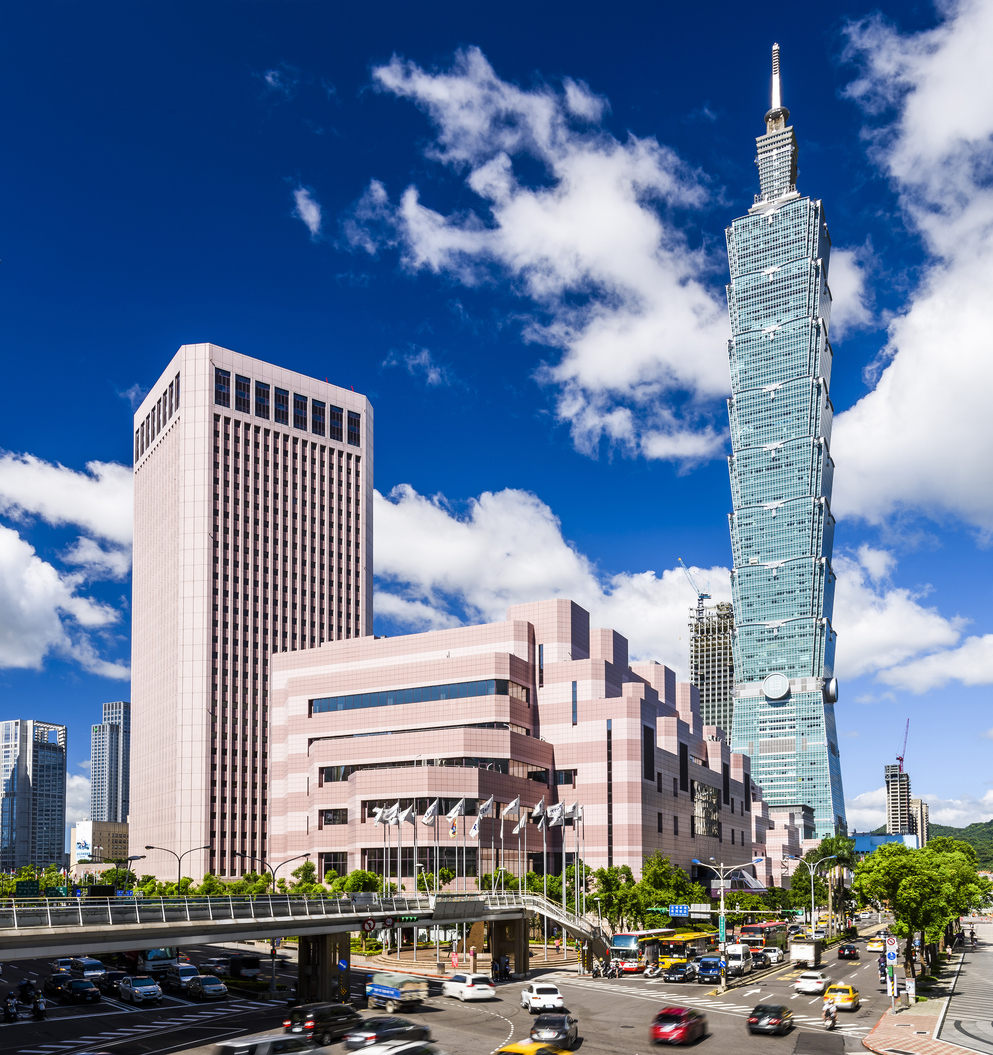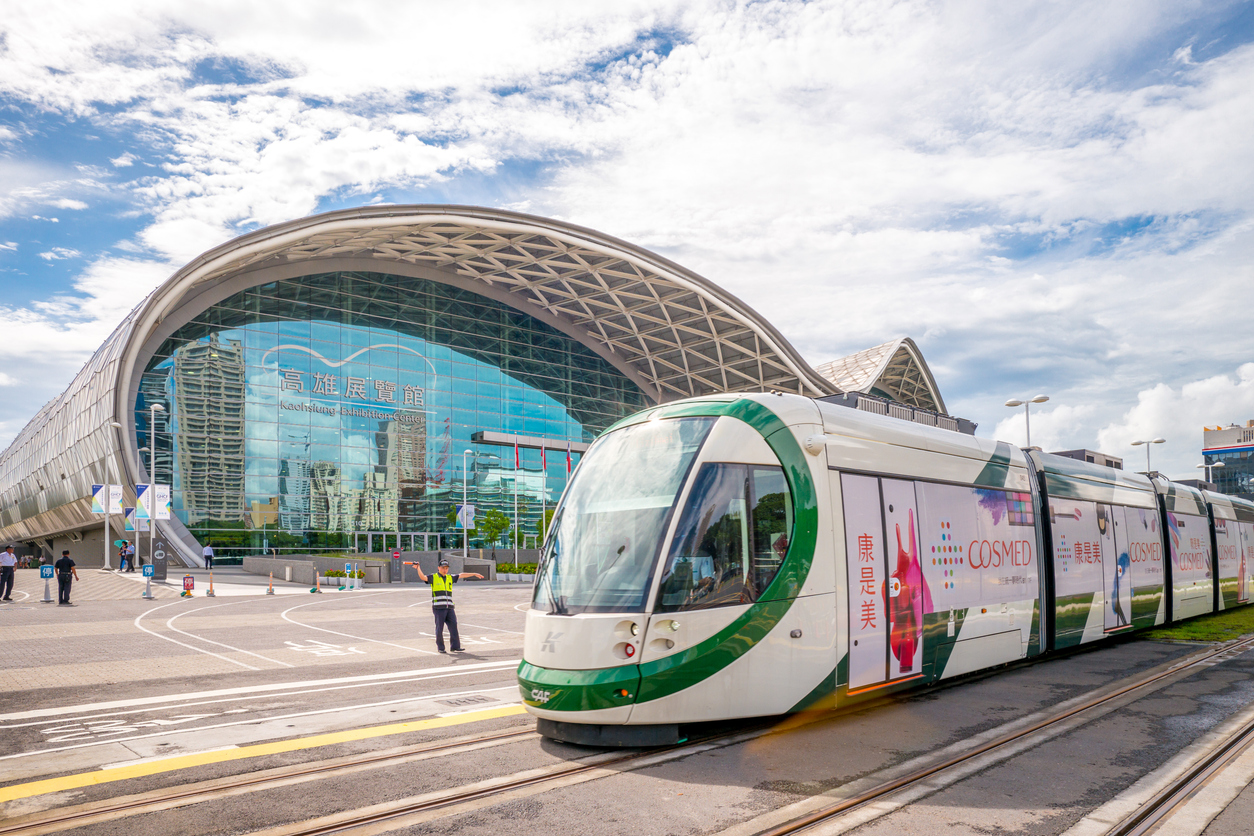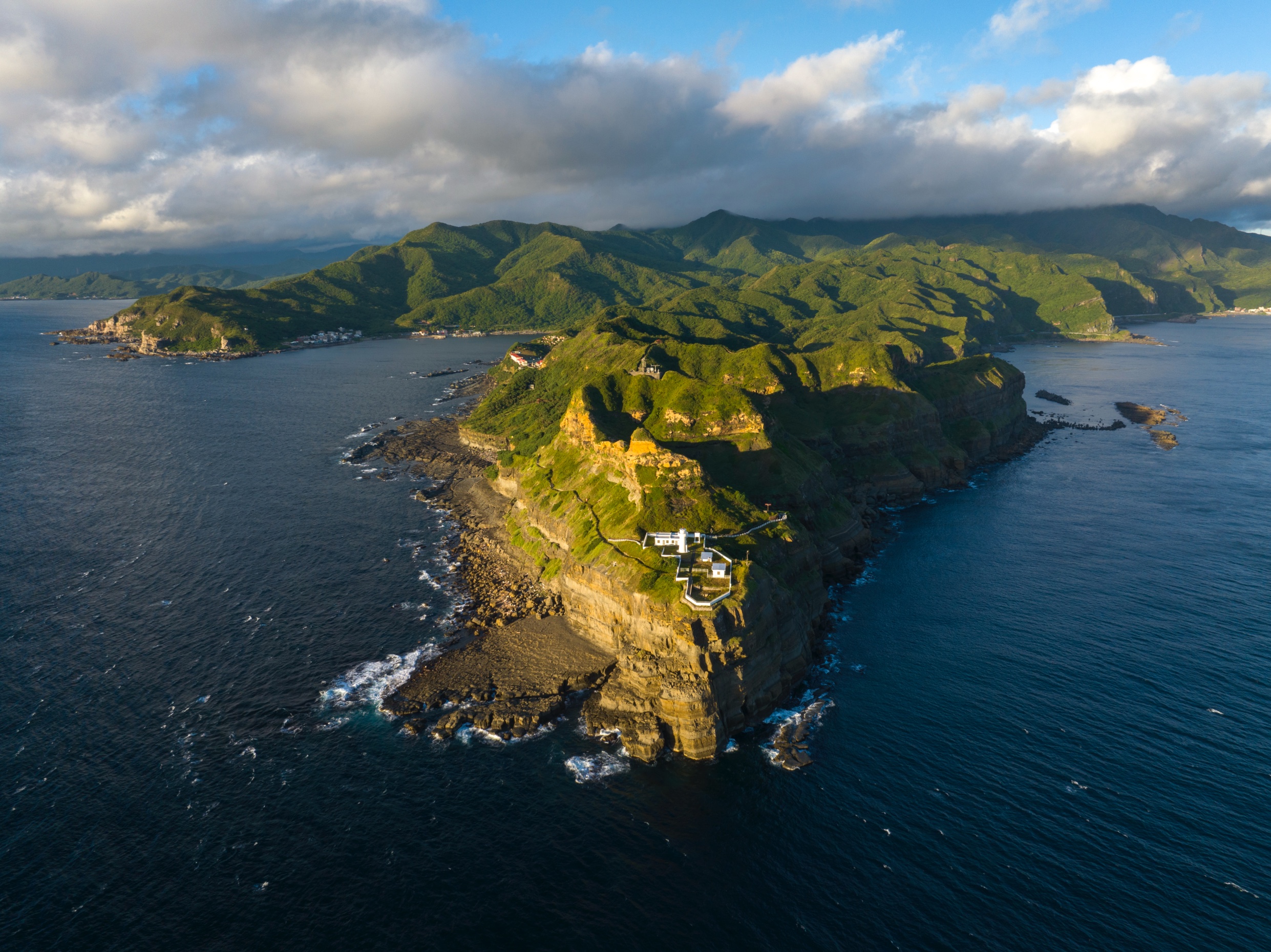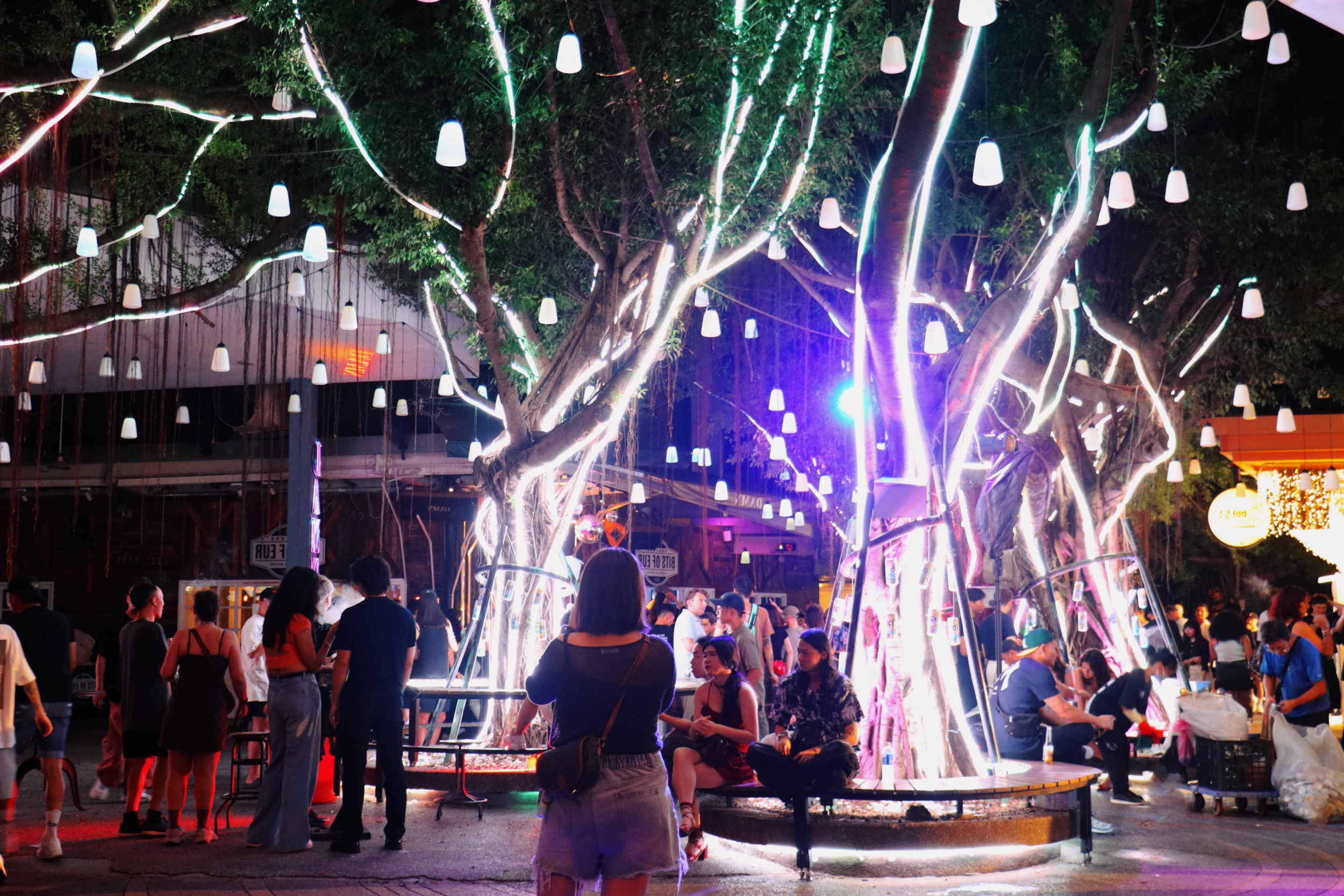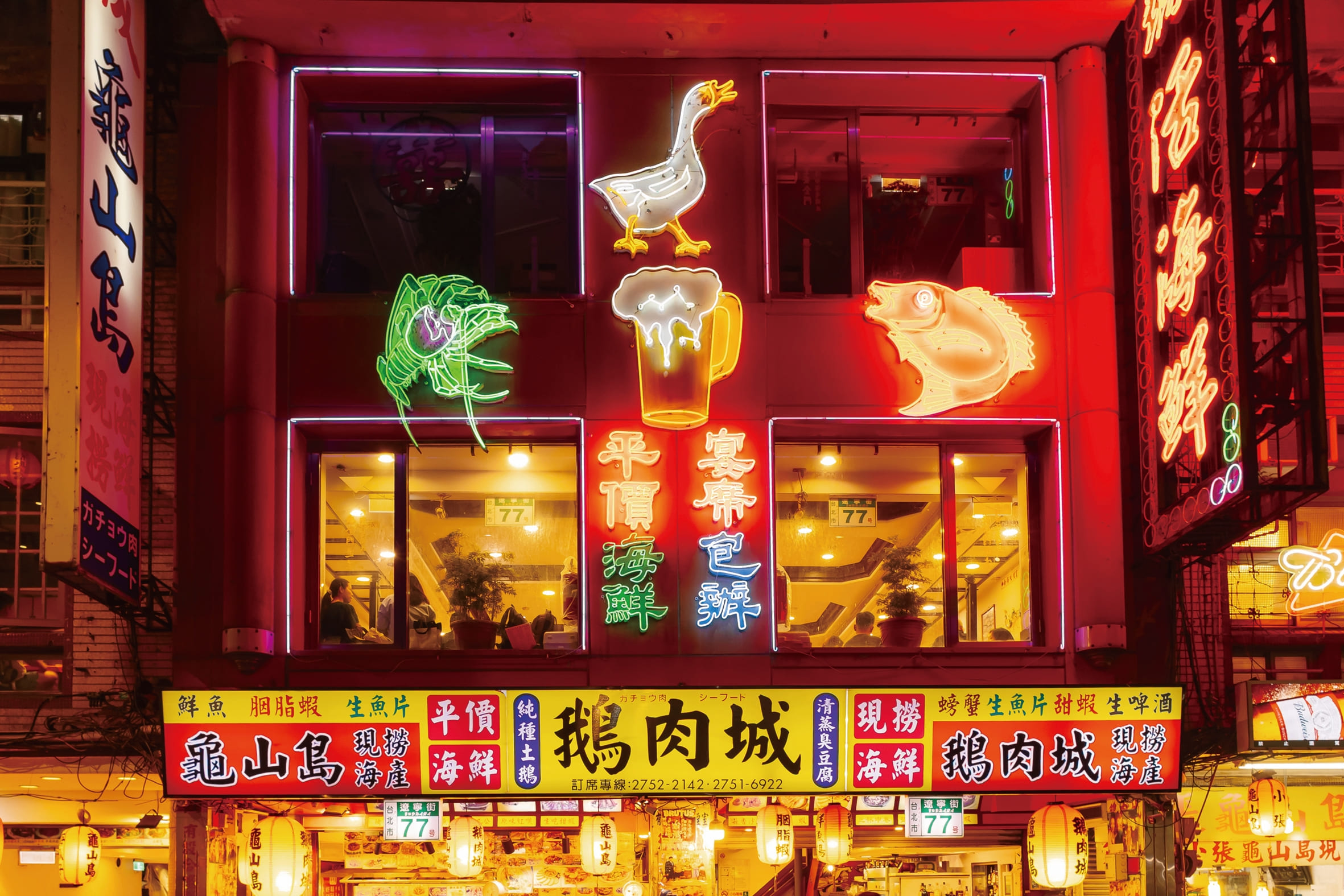And How to Get Up Close – and Maybe In – One Yourself
Author & Photographer: Rick Charette
Editor: Julien Huang
The fantastically colorful, bombastically ear-splitting, Mazu pilgrimage procession! During your globe-trekking travel days you may have come face to face with one or more while visiting a Chinese temple – a long line slowly approaching the temple, temple band leading the way blowing away at wind instruments and pounding away on gongs, tall and fearsome guardian deities next followed by ornate sedan chairs following with the visiting gods inside, storms of firecrackers blasting off, then pilgrims with incense sticks in hand – sometimes in the hundreds – flowing behind.
You’ve asked yourself, “What on earth am I watching?” Taiwan Scene is at your service, your guide to the who, what, when, where, and why of the magical, wonderfully photogenic phenomenon that is the Taiwan Mazu pilgrimage, staged by countless island temples each year. Let’s head out!
The Goddess of the Sea
Mazu (媽祖) is a Daoist deity – Goddess of the Sea. “Mazu” translates as “Mother/Maternal Ancestor,” most common of her various official titles. She is Taiwan’s most popular deity, worshipped at upwards of a thousand temples and shrines. This is logical, as Taiwan is an island nation and she is a protector of seafarers (amongst many other talents). In Taiwan’s pioneer days, when Chinese immigrants arrived by junk, many built small places of worship in her honor where they settled, housing the Mazu icon brought on the ship to protect them during the infamously treacherous Taiwan Strait crossing. These were concentrated in the island’s central and south coastal regions, and many grew to be impressively large complexes.
Today, temples all around the island launch pilgrimages each year in the period leading up to Mazu’s birthday (23rd day of the 3rd lunar month), bringing their Mazu icons to visit older and more powerful Mazu icons in the central/south region.
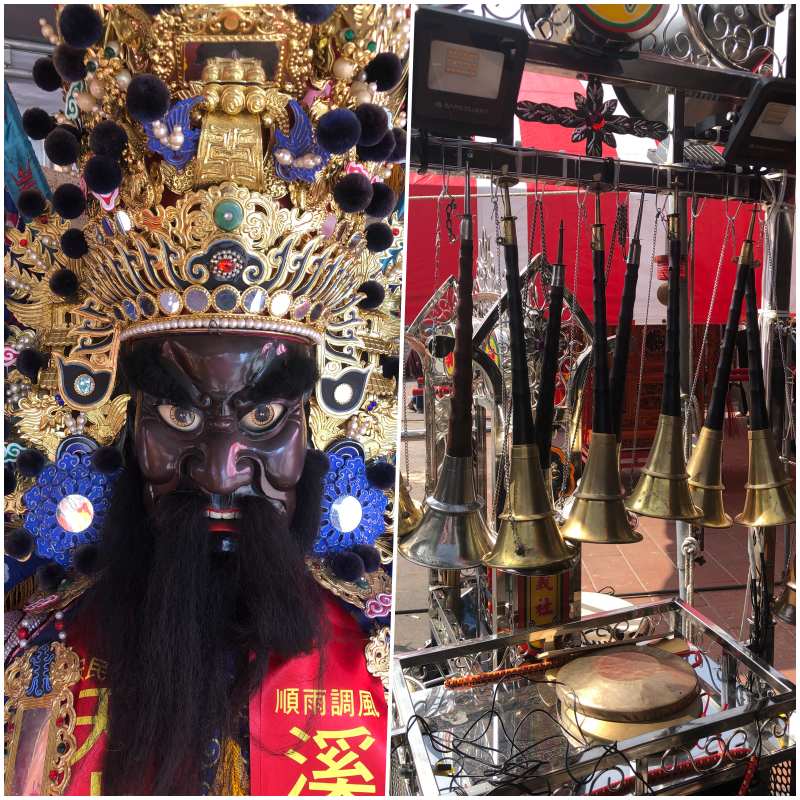
This writer’s Mazu pilgrimage procession bona fides, you ask? I’ve been on 10~12 pilgrimages (I’ve lost count) with my New Taipei City local temple – yes, the single white person conspicuously marching amongst 200-thereabouts pilgrims. My father-in-law, a residential-building developer, built our temple, manages it, headed the temple band until this year, and organizes the pilgrimages. We journey south in 5 or 6 coaches plus our truck carrying our guardian deities, palanquins, deity icons, band instruments, and the seemingly inexhaustible fireworks we’ll be blasting off.
Over two days, we visit eight Mazu temples. The two most important are both famed national-level heritage sites, Fengtian Temple (奉天宮) in the Chiayi County town of Xingang and Chaotian Temple (朝天宮) in nearby Beigang (北港), among the country’s most high-powered Mazu places of worship.

A Pilgrimage Procession – What You’ll See, and Why
So, let’s start at the start. The main deity in each temple (Mazu here) sits in the middle of the front hall and has a direct view out the temple’s large central door. So to show respect your procession must approach in a straight line from directly out front so the deity can watch unobstructed.
As said, following the temple band are the elaborately costumed guardian deities. These are the “Eight Generals” (八家將), many sporting fierce visages. Their job is to scare off lurking evildoers from the non-mortal world. Helping with this are intense firecracker blasts set off as they near the temple; otherworldly nasty types are afraid of loud noises. The Eight Generals are, in effect, giant – and very heavy – puppets, and the lads inside them must be strong. Such troupes are commonly filled with young fellows from troubled homes; temple management brings them inside to give them focus, and the troupe earns extra money by performing in other events not related to their temple.
The guardians strut about, arms swaying back and forth, filled with preening confidence, but as they individually present themselves to a temple’s main deity before the central portal they’ll abruptly turn and walk back toward the troupe. They’ve found the august presence of the main deity too overwhelming, and retreat in humility.
After all have presented themselves, they stand aside in rows to allow the Mazu palanquin to approach. As it does, it dramatically starts to shake and buck. No, the bearers are not doing this. It is Mazu herself, excited as she clearly views the icon within the temple, who ranks so far higher than her in the celestial pantheon. (Our temple in fact brings two Mazu icons, the why explained below.)
In traditional religious belief, the world beyond is believed to resemble the mortal realm, with a great pantheon of deities of different rank and responsibility watching over our realm in the same manner as the ranks of Chinese imperial officials did in times past. In the mortal world, the emperor on top, in the immortal, the Jade Emperor. A pilgrimage Mazu is borne along in an intricately carved palanquin as were yesteryear’s mandarin officials, latticework windows preventing commoners from peering inside. Deity icons and the guardian deities are bedecked in Gaudi-esque attire mimicking the elaborate identifying garb of officials of varying rank.
As the bearers bring the palanquin toward the central portal, stepping through a thunder of firecrackers unharmed shows that the visited temple’s goddess beholds them with favor. Just before reaching the doorway, the palanquin will suddenly lurch forward a few steps and then back away a few times. This is a show of respect, the visiting deity hesitant to enter at the sight of the illustrious divinity waiting within, demonstrating humility and obeisance.
Time now to enter the temple. The visiting Mazu icon is carefully taken from the palanquin, carried through the portal, then passed over the large main censer placed directly before the temple’s main deity, the incense smoke providing a blessing. It is thereafter placed on the main altar for a visit, and the hundreds of pilgrims following in the procession train stream inside to pray.

Transfer Boost of Godly Power
The reason my temple always visits the aforementioned Chaotian and Fengtian temples is that when my father-in-law built our temple one consecrated Mazu icon was obtained from each and brought back to our temple. This instantly bestowed them with needed power to protect our community – i.e., power “borrowed” from the formidable Chaotian and Fengtian goddesses. Ashes were also taken from their censers to “seed” our temple’s main censer.
Each year, taking our Mazu statues to visit these “ancestral” temples both shows respect to the Chaotian/Fengtian “elders” and also provides what you might call a “power booster shot” for our deities. New censer ash is also brought home, providing additional community-safeguarding power.
This type of spiritual sojourn to a higher-ranking temple is referred to as jinxiang (進香) or “paying a visit/entering to offer incense.” As the procession enters the temple, or perhaps as an icon is passed over the censer, you’ll hear people exclaim jin-a! (進啊!). This is the same jin, with a added for exclamatory emphasis. It is used to respectfully announce one’s entry when entering a sacred space. The taking away of ashes is referred to as “reaping the flame” (刈火).
Note that in each temple, the Mazu icon(s) that travels is not the large statue that sits against the back wall of the hall. It is the much smaller figure that sits on the main altar directly before this figure.
Dajia Mazu Pilgrimage (大甲媽祖進香)
Taiwan’s most spectacular Mazu birthday celebration is the long march, fully on foot, bringing the Dajia Mazu from Taichung’s Zhenlan Temple (鎮瀾宮) to visit the Mazu at Xingang’s Fengtian Temple (奉天宮). The Fengtian figure, claimed to be about 1000 years old, is higher up the icon pecking order. This pilgrimage dates to the 1730s (first to China, changed to Taiwan in 1914).
The nine-day, eight-night round-trip journey is over 300km, with about 100 temples visited and thereby blessed on the way. This is Taiwan’s largest Mazu pilgrimage, with the greatest number of participating performance troupes and pilgrim marchers. Hundreds of thousands take part. The procession is accompanied by such festive activities as dragon and lion dances, float parades, puppet-stand theatrical performances, and displays of embroidered banners.
The Dajia icon also has remarkable powers. Believers crowd the procession route to receive ashes from her censer in auspicious red-dyed pouches as well as some of the tea brewed in offerings to her, both believed to have magical curative powers. You are also blessed by the deity by kneeling and bowing in her palanquin’s path and have it pass over you, or by crawling underneath when the litter is stationary. All marchers are blessed, whatever the distance they cover, though many claim only a completed round-trip journey brings Mazu’s full protective powers. All are welcome to take part, not just Zhenlan Temple devotees, giving you the cultural globe-trekker the unique opportunity to personally participate in a Mazu pilgrimage.
Discovery Channel has declared this one of the world’s three biggest religious festivals, and Mazu beliefs and customs have been included on UNESCO’s Representative List of the Intangible Cultural Heritage of Humanity.
Baishatun Mazu Pilgrimage (白沙屯媽祖進香)
Second in scale only to the Dajia Mazu event, this 8/9-day pilgrimage sees devotees carry their Mazu icon on a return journey between Gongtian Temple (拱天宮) in Baishatun, Miaoli County and her mother temple, Beigang’s Chaotian Temple, totaling approximately 400km. Tens of thousands join in this march, in whole or in part. Dating to 1867, it has exploded in popularity in recent years largely thanks to social media, with influencers and celebrities joining and livestreaming used, attracting the attention of younger generations.
Uniquely, there is no set route. The palanquin bearers “sense” which roads Mazu wishes to follow. This lends a sense of adventure that attracts both religious devotees and casual participants.
Another unique phenomenon is the palanquin, nicknamed the “Pink Supercar” (粉紅超跑) because of its unpredictable, fast movements. Chasing after it brings a sense of excitement to followers.
Like the Dajia pilgrimage, it is easy for you to participate. Everyone is welcome to join the procession, as long as they like. Along the route blessed “Mazu rice” (媽祖米) symbolizing abundance and protection is handed out, as are blessed scarves and talismans. And whenever the palanquin stops, you can approach to gently touch it or crawl under it, bringing divine protection and good fortune.

